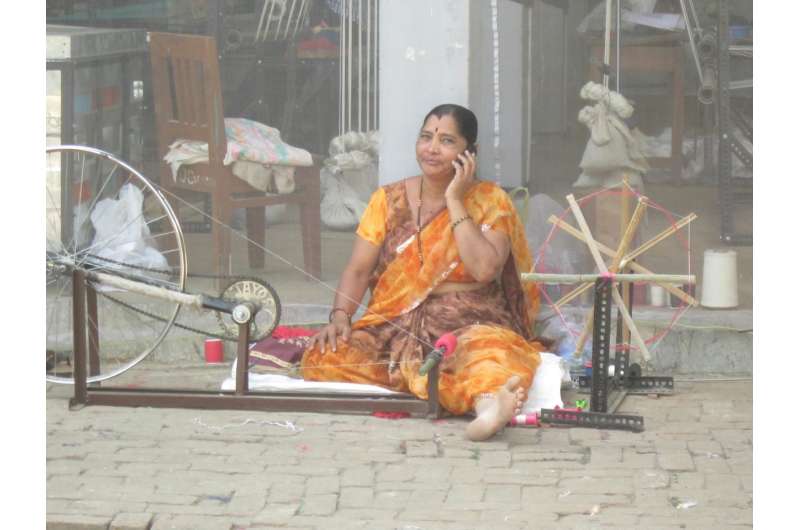Handwoven textiles—a step on the path to sustainable fashion?

The fast-industrial fashion system, where profits go mostly to those at the top, and which produces high volumes of deliberate waste, is a dinosaur that will not survive the transition to sustainability. So believes textile management doctoral student David Goldsmith at the Swedish School of Textiles. In his doctoral thesis, he studied an example of its supposed opposite: a slow-artisanal social enterprise in India that makes hand-loomed fashion fabrics.
The research purpose of the project was to learn how this sort of business model operates and relate to ideas about slow and sustainable fashion. The enterprise he studied, WomenWeave, is focused on economic and social development in rural India, and employs more than 200 women. But in this business model, unlike mainstream fashion businesses, leadership works pro bono, and management work at low financial compensation. Their goal is not to make a profit, but to bring livelihoods to women living in multi-dimensional poverty.
"Artisan fashion," what Goldsmith calls the kind of fabrics and garments that are made with simple tools in developing world contexts, can be a change agent because it follows an alternative, low-volume, high-value logic.
"The industrial fashion system demands high volumes of production and consumption – two things we definitely do not need now. Imagine if beautiful and meaningful artisan fashion was as common as industrial fashion is today. Production and consumption would be a tiny fraction of what it is today and the value of what we wear would again be significant," says David Goldsmith.
"It may seem like a dream, but what we have now is a nightmare. Everyone working toward sustainable fashion knows that radical change is needed. That is the big picture. The research however shows that the enterprise has been successful at developing and using a particular set of values and aesthetics—their kind of fashion—to get money, and the opportunity for development that brings with it, into the hands of people who need it the most."
The doctoral thesis is ethnographic and in the area of textile management. With multiple visits over ten years he was able to become a part of the community. Through formal interactions with the founder, leadership, the management and operations team, designers, and the many artisans who work, for example spinning, winding, weaving, washing, and pressing, he discovered the way the enterprise works.
"I've really met everyone in the organisation. And I visited them at their homes, attended family events, and so on, to understand the organisation as a whole, from the perspectives of those with a lot privilege and power in the world, and from the women working there. The key point was to see what the business model does for the people with their hands in the making of the material," he says.
What is sustainability?
According to Goldsmith, in the fashion context, sustainability now means whatever the person saying it wants it to mean. He says that the way we casually use simple terms like sustainable, fair, fast, and slow is also a problem, pushing us to think that the world is black and white.
"Even though the fabrication of the fabrics at WomenWeave is slow, the company is modern, for example, reliant on fast communication and fast transportation. The same goes for what we mean when we say sustainability. Just because on a local level, in their piece of the universe, WomenWeave does a lot of good, the garments do not automatically become "sustainable" because they are handmade by poor people," says David Goldsmith.
The women there think their lives are "sustainable" – that is, they feel grounded, can save a little money, can maybe build a little house, gain better access to water, secure education for their children, and similar great outcomes.
"We can be sure however that the woman who purchases, in a boutique in Stockholm, a shawl made by the women has a very different idea about her socio-economic sustainability. I would say the business model is economically and sociallybeneficialfor the people it is meant to serve. That's what I found. It's better than sustainable. At least we know what beneficial means."
More information: WomenWeave Daily: "Artisan Fashion" as "Slow and Sustainable Fashion," Goldsmith, David, University of Borås, Faculty of Textiles, Engineering and Business. 2018 (English) Doctoral thesis, monograph
Provided by University of Borås




















